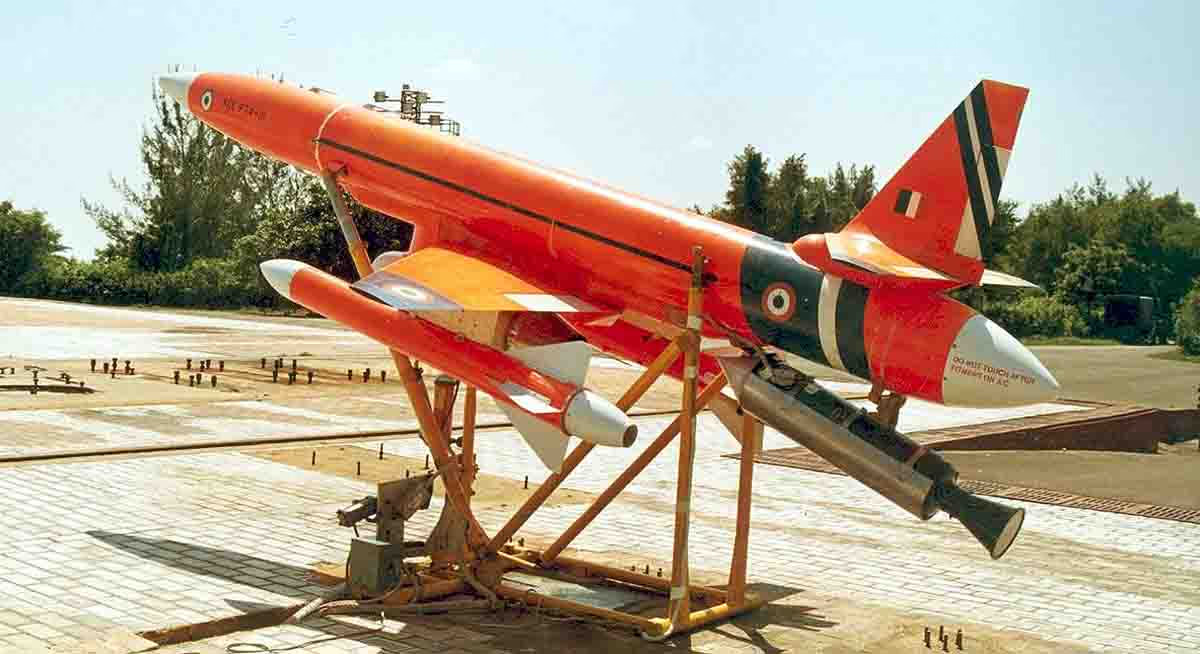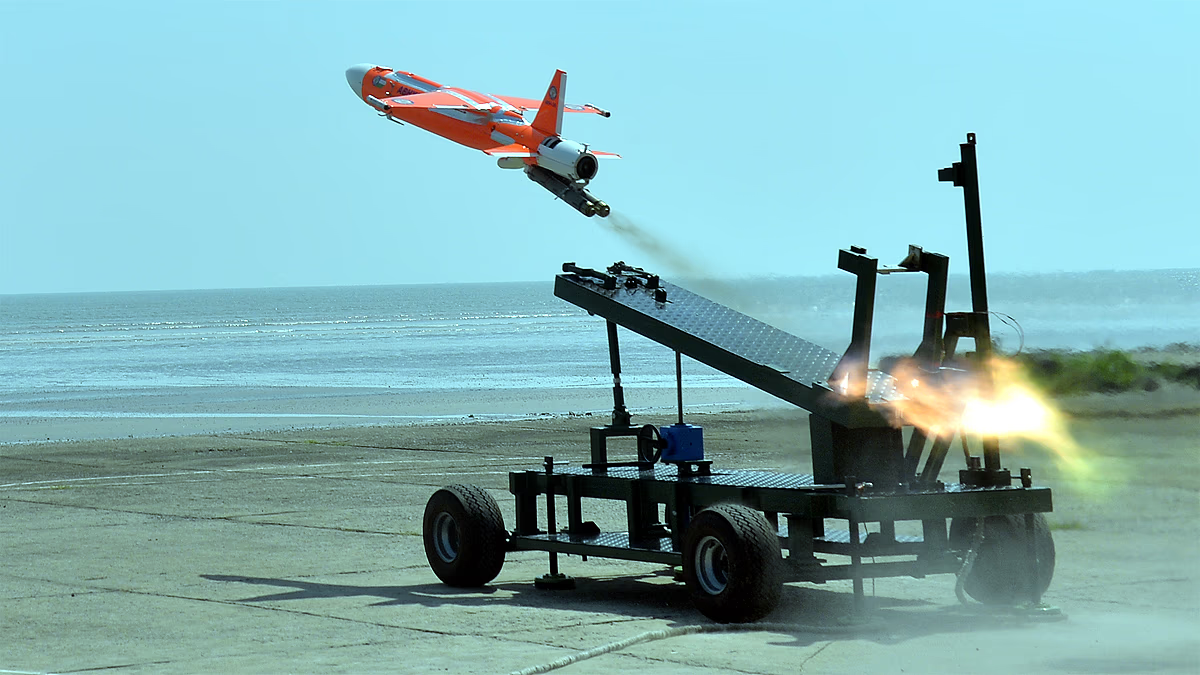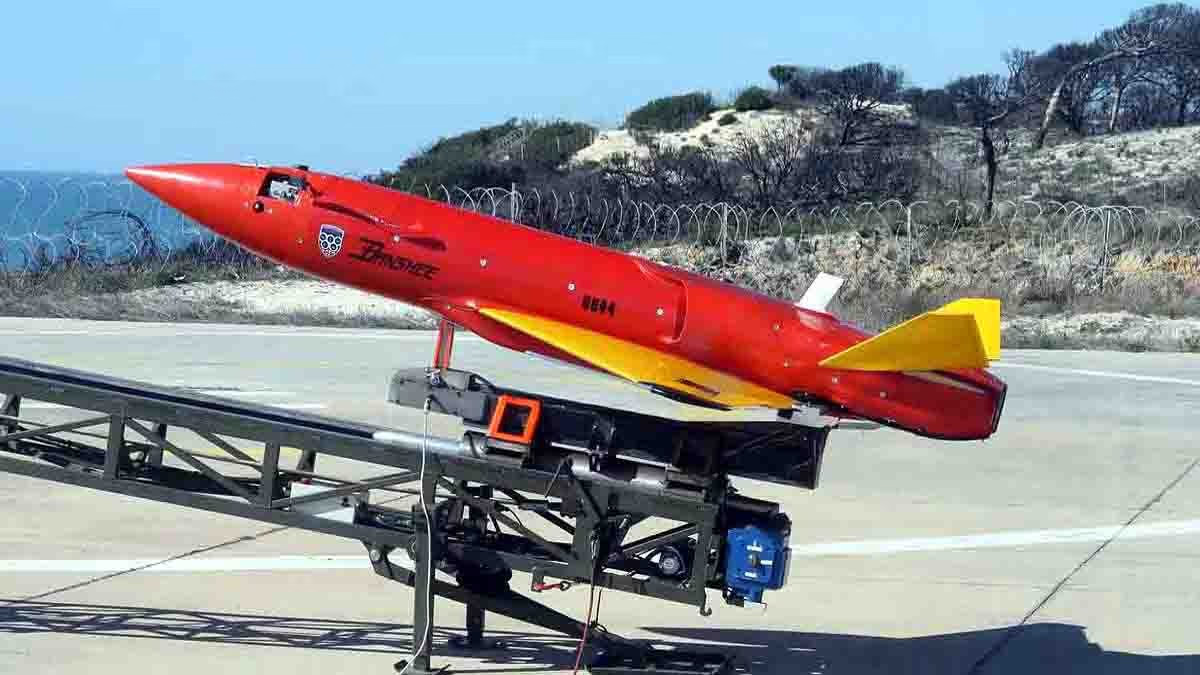In today's era, the face of warfare is changing, with small drones and smart technologies taking the field. Operation 'Sindoor' launched by India in May 2025 is a living example. It was a precise strike on Pakistan's terrorist hideouts, a strong response to attacks on its people.
Without sending Rafale or Sukhoi aircraft across the border, India outsmarted the enemy using the power of drones and electronic warfare. This campaign not only showcased 'self-reliant India,' but it also set the blueprint for future wars. Let's delve into this operation and explore how weapons like Banshee, Lakshya, and X-Guard made history. Discover what new weapons are arriving.
Collaborative Long Range Target Saturation/Destruction System, or CLRTS/DS, is a revolutionary drone system based on swarm drone technology. With a range exceeding 1000 km, it encircles and annihilates targets. Approved on October 24, 2025, this 55 billion Rupee project is a game changer for the Indian Air Force.

Source: aajtak
Although it was still in development during Operation Sindoor, emphasizing the need for technologies like CLRTS/DS was evident to demolish enemies from afar in future missions.
Though CLRTS/DS was not used in Operation Sindoor, similar decoy and strike drones worked wonders. India effectively confused Pakistani radars with decoy drones, ensuring success for the real attacks without interruptions. This was the first large-scale demonstration of drone-centric warfare, where no pilot was endangered and losses were minimized. These drones made the enemy's air defense completely misled, as if a major air attack was underway.
Banshee drones, originally based on Canadian technology, became part of India's arsenal. They impersonate jet fighters so well that enemy radar believes a real aircraft is approaching. During Operation Sindoor, two Banshee drones were launched, landing in Pakistan's central area.
This led the Pakistani military to believe they had downed a Rafale plane. In reality, these were mere decoys. With a 40-kilometer range and low cost, Banshee is an affordable distraction tool, fully activating Pakistan's air defense systems, allowing India's genuine strikes to stealthily succeed.

Source: aajtak
The Lakshya drone, developed by DRDO, featured prominently in Operation Sindoor with its Target-2 version. It imitates fighter jets, thoroughly confusing radars. During the campaign, Lakshya was launched to awaken Pakistani radars, air defenses, and command systems, making it seem like a massive aircraft assault was in progress, though they were just pilotless drones. This drone, capable of flying at an altitude of 8 kilometers, is not only useful for training but also adept at espionage and creating diversions.
The X-Guard is an electronic warfare system for Rafale fighter planes, powered by artificial intelligence. It deceives enemy missiles with false signals and blinds radars. In Operation Sindoor, Rafales utilized X-Guard, even without crossing the border.
This system created decoy targets, engaging Pakistani radars to shield actual attacks. French technology complements India's Rafale fleet perfectly, giving the enemy the illusion of a downed plane when nothing actually occurs.
In the operation, besides Banshee, Lakshya, and X-Guard, other drones took the stage. The Israeli SkyStriker loitering munition drones circlingly struck terrorist locations with precision. Its 100-kilometer range and 30 kg payload obliterated targets. DRDO's Abhyas decoy drone, similar to Banshee, sowed confusion in Pakistan's central region. Together, these drones acted as 'force multipliers,' achieving a significant impact with small power.

Source: aajtak
Operation Sindoor proved that drones could defeat the enemy without risk. Pakistan's air defense was rendered useless, leading to a triumph for India with minimal expenditure and no pilots endangered, the most significant advantage. The lesson from this mission highlighted the necessity for systems like CLRTS/DS to launch attacks from thousands of kilometers away, redefining intimidation strategies.
Every technology comes with risks. Drones can be easily brought down, as seen with Banshee and Lakshya. Adversaries can jam them. Explosives can harm the environment, causing pollution and debris issues. But India now emphasizes indigenous weapons, reducing foreign dependency and overcoming these challenges.
Operation Sindoor has accelerated projects like CLRTS/DS. New deals worth 790 billion Rupees will strengthen the Indian military further. It's the era of drone warfare, where small weapons can outsmart big foes. India is poised to become a global drone superpower, a prowess that will astonish the world in the coming years.




